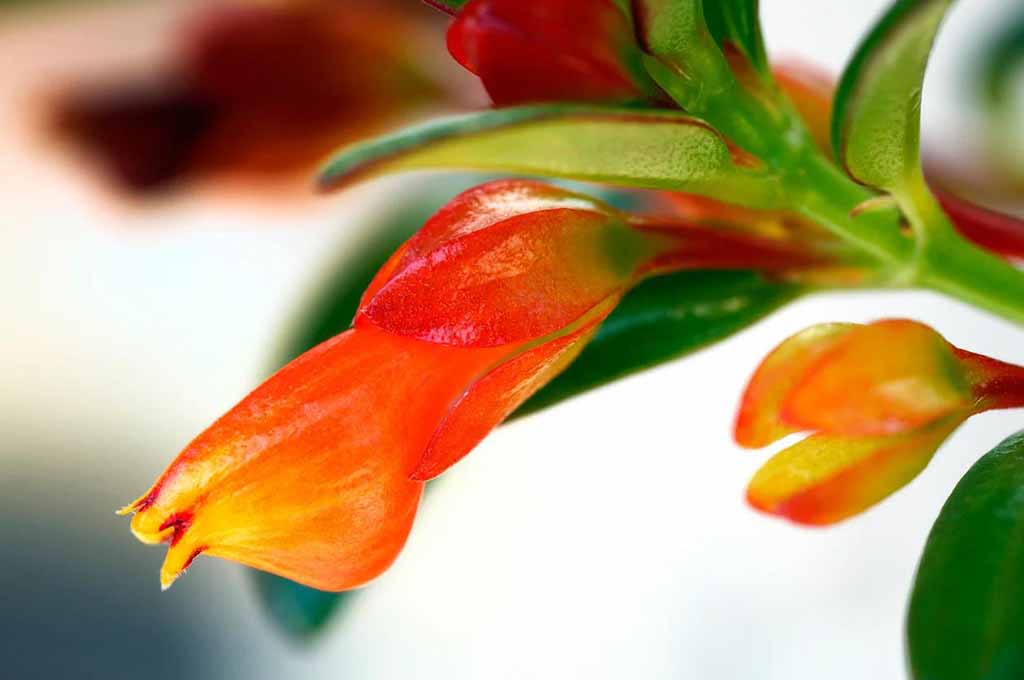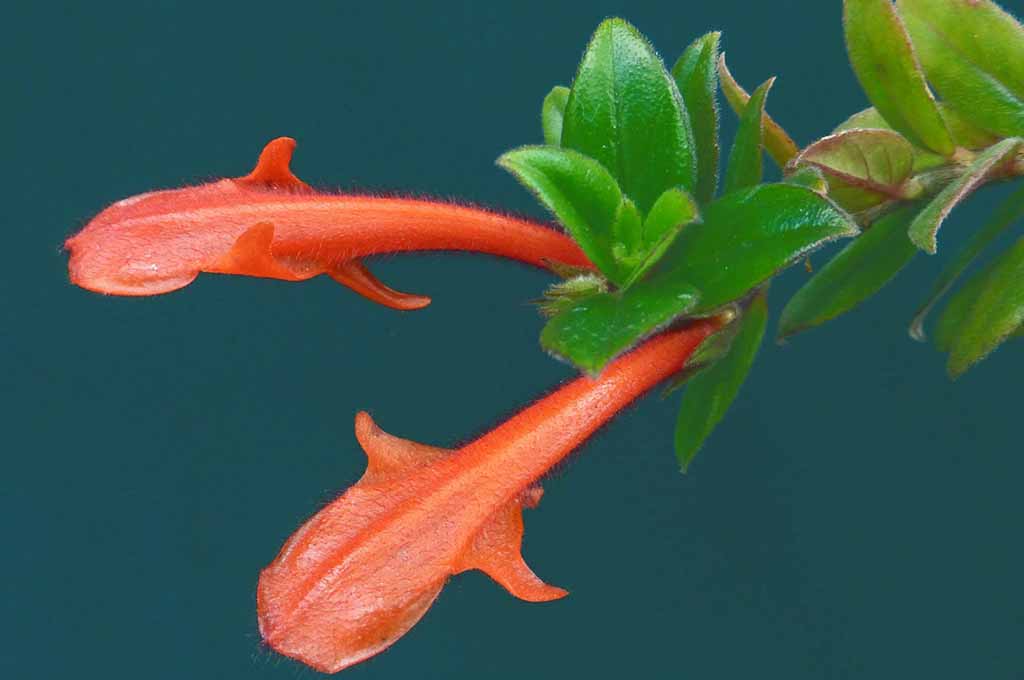Care And Growing Guide For Goldfish Plant
Goldfish plants are worth growing to glow up any space with green leaves and colorful flowers. These plants are named after goldfish because when the flowers bloom, they appear like goldfish. They are also famous due to their hardy nature. However, you need to take proper goldfish plant care for a decade-long life.
In this article, you will learn about the care and growth of the goldfish plant. Moreover, how can you grow a goldfish plant in a hydroponic system? In the last section, you’ll also learn about some daily care tips with methods to get rid of spider mites on goldfish plants. There is also a curious question at the end.

Goldfish Plant
Goldfish plants are worth growing as an indoor plant. However, certain aspects are better to know for proper growth and goldfish plant care. Here are some of them are explicitly discussed.
Plant Distribution
The Goldfish plant, or Nematanthus, is native to the highly humid regions of South America and Central America. These slow-growing plants abundantly grow in Brazil, Costa Rica, and Southern Mexico parts.
Characteristics
Goldfish plants carry the following specific characteristics.
- They have abundant small, thick, oval-shaped, green leaves that face downward.
- Its flower blooms throughout the year except winter.
- It can grow up to 3 ft high and 2 ft wide.
- They usually bear red and orange color.
- High humidity is necessary for optimal growth.
- They lie in the list of hardy plants and the perennial plants category.
- They require well-drained and moist soil.
Growing Period
You can grow a goldfish plant during a longer period, i.e., spring to summer, providing a suitable humid environment and proper care.
Lighting
Goldfish plant requires bright but indirect light for 4 to 6 hours daily. Too much and less light causes problems for them. Too many causes scorching of the plant leaves. On the contrary, low light decreases the flower blooming.
Temperature
A goldfish plant grows best at high room temperature. However, the suitable growth-temperature range is 18.3 to 29.4°C. Temperature below the range causes slow growth, while the high-temperature causes scorching on the leaves.
Breeding/Propagation
Spring and summer are the best seasons for propagation. There are two ways of goldfish plant propagation, i.e., through seed and stem cutting. It’s tough to propagate them through seeds. Therefore, propagation through the stem is the most viable option. Here is a simple procedure to do so.
- Cut at least 4 inches long stems below the leaf node without flower or buds.
- Remove the bottom leaves from the stem and place them in rooting-hormone mixed water.
- Place the cutting in a warm but away from direct sunlight place.
- Change the water after every 7 days.
- After 2 weeks, the root will emerge, and you can transplant it to another container when the roots gain 2 inches in length.
- Grow them in a group of 3 or 4.
- The new plants will flower next year.

Growing Goldfish Plants in Hydroponics
Growing a goldfish plant in hydroponics is a learning and unique way. It requires a proper guideline to do so. Here in the following, you will learn about it.
System Selection
Several hydroponic systems are available, i.e., NFT, drip, wick system, etc. But you need to choose a system that is well suited to you. However, NFT (Nutrient Film Technique), aeroponics, and auto top-off systems are most suitable for growing goldfish plants. The drip system needs to operate at a proper rate according to plant size.
Growth Media
Growing media in hydroponic systems are lightweight media that give support to the plants and promote their proper growth. Select suitable growth media for your system. An ideal growth media is well-aerated and has good nutrition absorption capability. Several options are here in the following.
| Coco coir | Perlite | Rockwool |
| Vermiculite | Coco Coir Chips | Hydroton (Expanded Clay Pebbles) |
Nutrient Solution
Prepare a balanced nutrient solution that helps in thriving the goldfish plant. Here is the macro and micronutrient composition for them.
| Macro Nutrients | Micro Nutrient |
|
|
| EC Level: 1.2-2.5 mS/cm | pH Level: 5.8-6.5 |
Light Requirements
Provide 13 hours of light per day. A mixture of blue and red LED lights promotes proper growth. 200 to 600 µmol/m²/s is a suitable light intensity range.
Temperature
Set the temperature between 65°F to 75°F.
Humidity
These plants grow in highly humid areas. Therefore, maintain a minimum 45% humidity level in the system that mimics its natural habitat.
Proper Drainage
These plants are prone to root disease when exposed to high water for prolonged periods. Therefore, make sure to provide a proper drainage system. Also, make sure the system is continuously circulating nutrient solution in it.
Support Structure
Provide a support structure to plants when the top becomes heavy.
Monitoring
Check the plant’s health daily to avoid any setbacks. Moreover, it’ll also help in maintaining the system in optimal condition. Also, check the nutrient level daily, along with the pH and EC of the solution.

How to Care For a Goldfish Plant?
Goldfish plants are hardy, but they need proper care for optimal growth. Here are daily goldfish plant care tips. Along with tips, this section will also address how to get rid of spider mites.
Daily Care Tips for Goldfish Plants
- Use your fingertips to check the moisture. Water the plants when they dry up to the top few inches.
- Provide them with bright but indirect light. Direct sunlight can cause scorch to plants.
- Check the temperature and try to maintain it between 18°C to 24°C.
- Check the humidity and set the humidifier above 45%.
- Prune the dead and extra leaves to keep them in proper shape.
- Clean the plant leaves to remove dust from them.
- Fertilize them frequently in the blooming season, i.e., spring and summer.
How to Get Rid Of Spider Mites?
Spider mites quickly multiply their population. Therefore, it is hard to get rid of them from the goldfish plant. However, you can do it with the following different methods. Remember to use chemical methods as a last resort to rehabilitate your plant.
Natural Treatments
- Isolate the affected plants to avoid the spreading of spider mites problem.
- Introduce natural predators of spider mites, i.e., ladybugs and lacewings.
- Increase the humidity, as the mites love to live in dry conditions.
- Spray them with neem oil.
- Spray with water.
Chemical Treatments
- Use a mixture of 1 part alcohol with 4 part water. Rinse the leaves with a cloth soaked in solution. You can also go with spraying over the plants. Do it daily till the end of spider mites.
- Use 1 part dish soap powder with 4 parts water to spray the affected plant. It will suffocate the mites and lead them to death.

Can Goldfish Live Together With the Goldfish Plant?
No, because both are different entities. Goldfish plants require soil or soilless media for optimal growth. Moreover, they receive root disease when submerged in water for a long time. On the other hand, a goldfish is a fish that always needs water but not soil.
Conclusion
Goldfish plants are beautiful indoor plants. These tropical natives are excellent to grow because these perineal plants fill any site with red and orange flowers throughout the year, except in winter. Providing bright but indirect intense light for 4 to 6 hours daily and maintaining suitable humidity and temperature are the points to grow the goldfish plant.
In daily goldfish plant care, different chemical and natural treatments can help you to avoid spider mites on it. You can also grow them in a hydroponic system with suitable arrangements. However, you can’t put them aside with goldfish, as they require well-drained soil or soil media.




